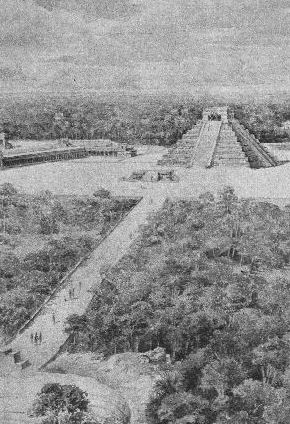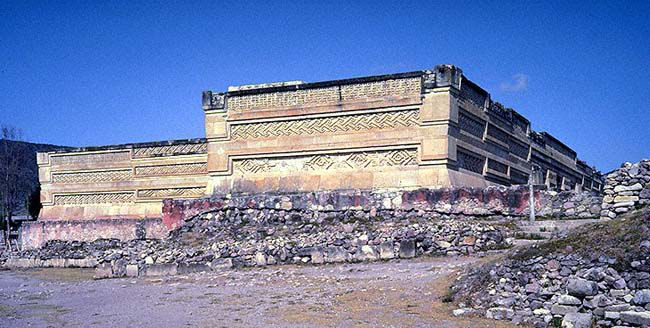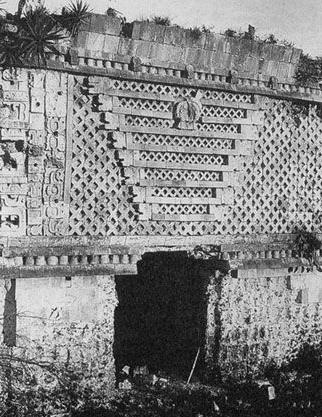Architecture
We will primarily be interested in a specific form of Mayan architecture, the Pyramid-Temple. These are so named because unlike the pyramids of Egypt, which are basically extremely large grave markers, the pyramid-temples of Mesoamerica, though similar in their triangular form, were surmounted by religious temples. They were active sites of religious activity, at which rituals happened, possibly daily. In addition, there is evidence highly accurate astronomical observations were made from the temples, probably by the same priests who led the religious ceremonies.
The Maya believed that sacred buildings should be located at places of power. What determined when a spot contained power and when it didn't is unknown, but we do know that periodically the power would be "regenerated" by rebuilding the temple. This was done by building an entirely new pyramid-temple directly over the top of an older one, encasing the older building entirely.

One of the great Pre-Columbian pyramids.



The Zapotec/Mixtec site Mitla is located in Oaxaca, inland from the Southern Pacific coast. It is famous for its elaborate stonework.

Home to the famous Pyramid of the Magician, Uxmal is a Mayan site in the central Yucatan. The Nunnery, a low arcaded building constructed around an inner court, has different stonework on each of the four faces. The East face is particularly well preserved.